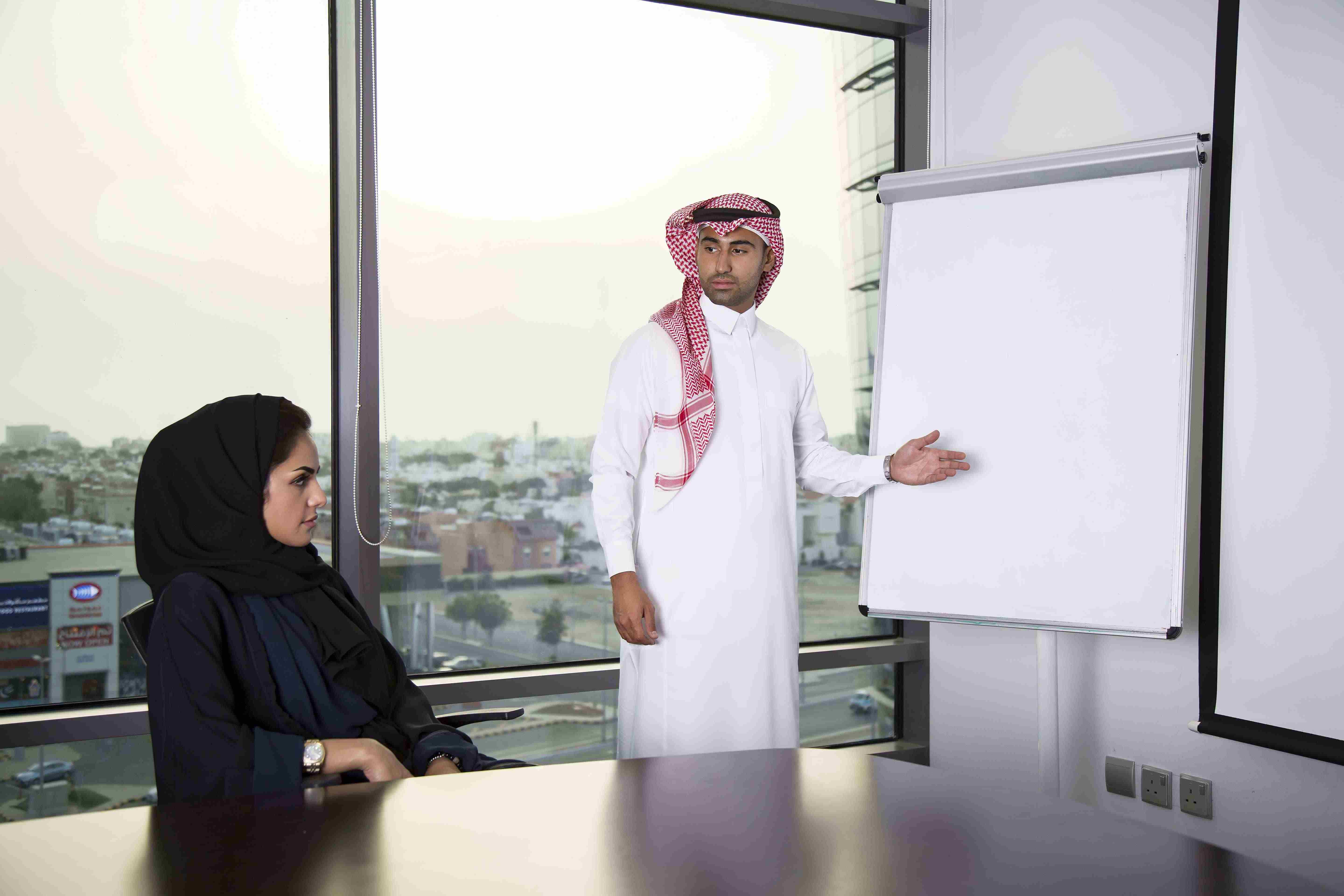In today’s rapidly evolving global economy, organizations must continuously adapt to new technologies, shifting market demands, and dynamic workforce expectations. Nowhere is this transformation more visible than in Saudi Arabia, a nation undergoing significant economic diversification under Vision 2030. Central to this transformation is the recognition that human capital development is the cornerstone of sustainable growth.
One of the most effective strategies to achieve this lies in the implementation of Employee Development Programs in Saudi Arabia. These programs go beyond traditional training initiatives; they represent structured, strategic approaches to empowering employees, enhancing productivity, and cultivating innovation.
This article explores the concept, components, benefits, and challenges of employee development programs within the Saudi context. It also connects to earlier discussions on leadership and corporate training, illustrating how workforce development and leadership growth intersect to drive organizational success.
ـــــــــــــــــــــــــــــــــــــــــــــــــــــــــــــــــــــــــــــــــــــــــــــــــــــــــــــــــــــــــــــــــــــــــــــــــــــــــــــــــــــــــــــــــــــــــــــــــــــــــــــــــــــــــــــــــــــــــــــــــــــــــــــــــــــــــــــــــــــــــــــــــــــــــــــــــــــــــــــــــــــــــــــــــــــــــــــــــــــــــــــــــــــــــــــــــــــــــــــــــــــــــــــــــــــــــــــــــــــــــــــــــــــــــــــــــــــــــــ
Understanding Employee Development Programs
Definition
Employee Development Programs (EDPs) are systematic initiatives designed by organizations to improve the skills, knowledge, competencies, and career prospects of their employees. Unlike one-off training courses, EDPs are long-term, holistic programs that include skill development, career planning, mentoring, coaching, and performance management.
Objectives of Employee Development Programs
1. Enhance workforce skills to match organizational and market demands.
2. Increase employee engagement and retention by showing investment in career growth.
3. Support organizational competitiveness by fostering innovation and agility.
4. Align human capital with strategic goals, especially in the Saudi Vision 2030 context.
ـــــــــــــــــــــــــــــــــــــــــــــــــــــــــــــــــــــــــــــــــــــــــــــــــــــــــــــــــــــــــــــــــــــــــــــــــــــــــــــــــــــــــــــــــــــــــــــــــــــــــــــــــــــــــــــــــــــــــــــــــــــــــــــــــــــــــــــــــــــــــــــــــــــــــــــــــــــــــــــــــــــــــــــــــــــــــــــــــــــــــــــــــــــــــــــــــــــــــــــــــــــــــــــــــــــــــــــــــــــــــــــــــــــــــــــــــــــــــــ
The Saudi Context: Why Employee Development Matters
Saudi Arabia is actively investing in knowledge-based industries, digital transformation, and innovation ecosystems. According to Vision 2030, human capital is one of the main drivers of sustainable development.
Key contextual drivers:
• Youthful workforce: Over 60% of Saudis are under 35, demanding new opportunities and skill development.
• Economic diversification: The Kingdom is moving beyond oil into sectors such as technology, finance, tourism, and renewable energy.
• Global competitiveness: Saudi companies must align with international standards in workforce skills and productivity.
• National initiatives: Programs such as the Human Capability Development Program (HCDP) emphasize workforce upskilling and lifelong learning.
Thus, Employee Development Programs in Saudi Arabia are not just optional—they are strategic imperatives.
ـــــــــــــــــــــــــــــــــــــــــــــــــــــــــــــــــــــــــــــــــــــــــــــــــــــــــــــــــــــــــــــــــــــــــــــــــــــــــــــــــــــــــــــــــــــــــــــــــــــــــــــــــــــــــــــــــــــــــــــــــــــــــــــــــــــــــــــــــــــــــــــــــــــــــــــــــــــــــــــــــــــــــــــــــــــــــــــــــــــــــــــــــــــــــــــــــــــــــــــــــــــــــــــــــــــــــــــــــــــــــــــــــــــــــــــــــــــــــــ
Core Components of Employee Development Programs
1. Skills Training and Upskilling
Programs focus on technical, digital, and soft skills to ensure employees remain competitive in fast-changing industries.
2. Leadership Development Pathways
While not all employees will become executives, offering structured leadership pathways fosters internal mobility and organizational resilience.
3. Mentoring and Coaching
Mentorship connects junior employees with senior leaders, while coaching addresses individualized performance needs.
4. Career Planning and Succession Management
EDPs incorporate career roadmaps and identify high-potential employees for leadership succession planning.
5. Continuous Learning Platforms
E-learning, blended learning, and micro-learning platforms enable lifelong learning opportunities.
6. Innovation and Creativity Labs
Forward-looking Saudi organizations are integrating innovation hubs and design-thinking sessions into employee development.
.jpg)
ـــــــــــــــــــــــــــــــــــــــــــــــــــــــــــــــــــــــــــــــــــــــــــــــــــــــــــــــــــــــــــــــــــــــــــــــــــــــــــــــــــــــــــــــــــــــــــــــــــــــــــــــــــــــــــــــــــــــــــــــــــــــــــــــــــــــــــــــــــــــــــــــــــــــــــــــــــــــــــــــــــــــــــــــــــــــــــــــــــــــــــــــــــــــــــــــــــــــــــــــــــــــــــــــــــــــــــــــــــــــــــــــــــــــــــــــــــــــــــ
Benefits of Employee Development Programs in Saudi Arabia
1. Driving Productivity
Well-designed programs ensure employees acquire the right skills to maximize efficiency, reduce errors, and enhance output.
2. Fostering Innovation
By exposing employees to new methodologies, digital tools, and cross-functional projects, organizations stimulate creativity.
3. Enhancing Employee Retention
Saudi employees, particularly Millennials and Gen Z, place high value on career development opportunities. EDPs reduce turnover by building loyalty.
4. Supporting Vision 2030
Employee development aligns organizational goals with national objectives of building a knowledge-based, globally competitive workforce.
5. Strengthening Organizational Culture
Development initiatives signal that organizations value employees, thereby cultivating cultures of learning, trust, and engagement.
ـــــــــــــــــــــــــــــــــــــــــــــــــــــــــــــــــــــــــــــــــــــــــــــــــــــــــــــــــــــــــــــــــــــــــــــــــــــــــــــــــــــــــــــــــــــــــــــــــــــــــــــــــــــــــــــــــــــــــــــــــــــــــــــــــــــــــــــــــــــــــــــــــــــــــــــــــــــــــــــــــــــــــــــــــــــــــــــــــــــــــــــــــــــــــــــــــــــــــــــــــــــــــــــــــــــــــــــــــــــــــــــــــــــــــــــــــــــــــــ
Case Study Comparisons
Company A (Traditional Training Approach)
Company A relied solely on periodic workshops. While employees gained short-term skills, the absence of structured development led to limited innovation and high turnover rates.
Company B (Comprehensive Development Program)
Company B introduced a multi-tiered Employee Development Program, including e-learning, coaching, and succession planning. Within three years:
• Employee retention improved by 35%.
• Productivity increased by 22%.
• Innovation initiatives doubled, contributing to the company’s expansion in digital services.
These contrasting outcomes illustrate why comprehensive EDPs are more effective than isolated training efforts.
ـــــــــــــــــــــــــــــــــــــــــــــــــــــــــــــــــــــــــــــــــــــــــــــــــــــــــــــــــــــــــــــــــــــــــــــــــــــــــــــــــــــــــــــــــــــــــــــــــــــــــــــــــــــــــــــــــــــــــــــــــــــــــــــــــــــــــــــــــــــــــــــــــــــــــــــــــــــــــــــــــــــــــــــــــــــــــــــــــــــــــــــــــــــــــــــــــــــــــــــــــــــــــــــــــــــــــــــــــــــــــــــــــــــــــــــــــــــــــــ
Linking Employee Development to Leadership Programs
Earlier discussions emphasized the role of Leadership Development Programs in Saudi Arabia in preparing future-ready leaders. Employee development programs complement these efforts by building strong pipelines of talent. Together, they create a seamless ecosystem where organizations cultivate not only visionary leaders but also innovative, skilled employees.
In the article “Leadership Development Programs in Saudi Arabia: Building Future-Ready Leaders,” the focus was on executives. Here, we expand the perspective to include all employees, ensuring that leadership success is rooted in widespread workforce readiness.
ـــــــــــــــــــــــــــــــــــــــــــــــــــــــــــــــــــــــــــــــــــــــــــــــــــــــــــــــــــــــــــــــــــــــــــــــــــــــــــــــــــــــــــــــــــــــــــــــــــــــــــــــــــــــــــــــــــــــــــــــــــــــــــــــــــــــــــــــــــــــــــــــــــــــــــــــــــــــــــــــــــــــــــــــــــــــــــــــــــــــــــــــــــــــــــــــــــــــــــــــــــــــــــــــــــــــــــــــــــــــــــــــــــــــــــــــــــــــــــ
Challenges in Implementing Employee Development Programs in Saudi Arabia
1. Budget Constraints: Smaller firms may struggle to allocate sufficient resources.
2. Cultural Shifts: Some organizations remain tied to traditional hierarchical models that undervalue employee empowerment.
3. Measurement of ROI: Demonstrating tangible outcomes can be complex.
4. Rapid Technological Change: Programs must be updated frequently to remain relevant.
ـــــــــــــــــــــــــــــــــــــــــــــــــــــــــــــــــــــــــــــــــــــــــــــــــــــــــــــــــــــــــــــــــــــــــــــــــــــــــــــــــــــــــــــــــــــــــــــــــــــــــــــــــــــــــــــــــــــــــــــــــــــــــــــــــــــــــــــــــــــــــــــــــــــــــــــــــــــــــــــــــــــــــــــــــــــــــــــــــــــــــــــــــــــــــــــــــــــــــــــــــــــــــــــــــــــــــــــــــــــــــــــــــــــــــــــــــــــــــــ
Best Practices for Designing Effective EDPs in Saudi Arabia
1. Align with Strategic Goals: Programs must reflect both organizational priorities and Vision 2030 objectives.
2. Adopt a Blended Learning Approach: Combining classroom, online, and experiential learning maximizes impact.
3. Personalize Development Paths: Tailor programs to different career stages and individual strengths.
4. Leverage Digital Platforms: Utilize AI-powered platforms for adaptive learning.
5. Measure Outcomes: Use KPIs such as productivity, retention, and innovation metrics.
ـــــــــــــــــــــــــــــــــــــــــــــــــــــــــــــــــــــــــــــــــــــــــــــــــــــــــــــــــــــــــــــــــــــــــــــــــــــــــــــــــــــــــــــــــــــــــــــــــــــــــــــــــــــــــــــــــــــــــــــــــــــــــــــــــــــــــــــــــــــــــــــــــــــــــــــــــــــــــــــــــــــــــــــــــــــــــــــــــــــــــــــــــــــــــــــــــــــــــــــــــــــــــــــــــــــــــــــــــــــــــــــــــــــــــــــــــــــــــــ
Future Trends in Employee Development
1. Integration of AI and Analytics: Personalized learning paths based on performance data.
2. Gamification of Learning: Increasing engagement through interactive platforms.
3. Cross-Border Virtual Learning: Leveraging global partnerships.
4. Focus on Digital Transformation: Continuous upskilling for emerging technologies.
5. Wellbeing-Oriented Development: Incorporating mental health and resilience training.
ـــــــــــــــــــــــــــــــــــــــــــــــــــــــــــــــــــــــــــــــــــــــــــــــــــــــــــــــــــــــــــــــــــــــــــــــــــــــــــــــــــــــــــــــــــــــــــــــــــــــــــــــــــــــــــــــــــــــــــــــــــــــــــــــــــــــــــــــــــــــــــــــــــــــــــــــــــــــــــــــــــــــــــــــــــــــــــــــــــــــــــــــــــــــــــــــــــــــــــــــــــــــــــــــــــــــــــــــــــــــــــــــــــــــــــــــــــــــــــ
Frequently Asked Questions (FAQs)
Q1: How do Employee Development Programs differ from standard training?
EDPs are long-term, strategic initiatives focusing on holistic employee growth, while training often addresses short-term skill gaps.
Q2: Do SMEs in Saudi Arabia benefit from EDPs?
Yes. Scaled-down programs tailored for SMEs can significantly improve productivity and retention.
Q3: What role do EDPs play in Vision 2030?
They directly support Vision 2030 by aligning workforce skills with the national agenda for diversification and digital transformation.
Q4: How can organizations measure the success of EDPs?
Through KPIs such as productivity growth, employee retention rates, engagement surveys, and innovation metrics.
Q5: Are digital skills prioritized in Saudi EDPs?
Absolutely. Digital literacy, AI adoption, and cybersecurity are increasingly central in employee development initiatives.
ـــــــــــــــــــــــــــــــــــــــــــــــــــــــــــــــــــــــــــــــــــــــــــــــــــــــــــــــــــــــــــــــــــــــــــــــــــــــــــــــــــــــــــــــــــــــــــــــــــــــــــــــــــــــــــــــــــــــــــــــــــــــــــــــــــــــــــــــــــــــــــــــــــــــــــــــــــــــــــــــــــــــــــــــــــــــــــــــــــــــــــــــــــــــــــــــــــــــــــــــــــــــــــــــــــــــــــــــــــــــــــــــــــــــــــــــــــــــــــ
Employee Development Programs in Saudi Arabia are vital instruments for enhancing productivity, driving innovation, and achieving alignment with Vision 2030. They ensure that employees are not just task-performers but strategic contributors to organizational growth.
By investing in employee development, Saudi organizations unlock the potential of their workforce, create cultures of continuous learning, and sustain competitive advantage in the global economy.
As highlighted in earlier leadership-focused articles, strong leaders are essential—but equally important is a workforce that is skilled, agile, and innovative. Together, leadership and employee development form the dual engines of Saudi Arabia’s organizational and economic transformation.

.jpg)








